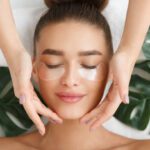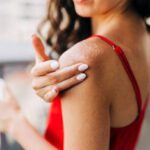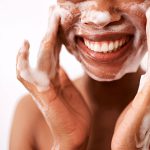Red Spots On The Skin: Causes, Treatments & How To Get Rid Of Them
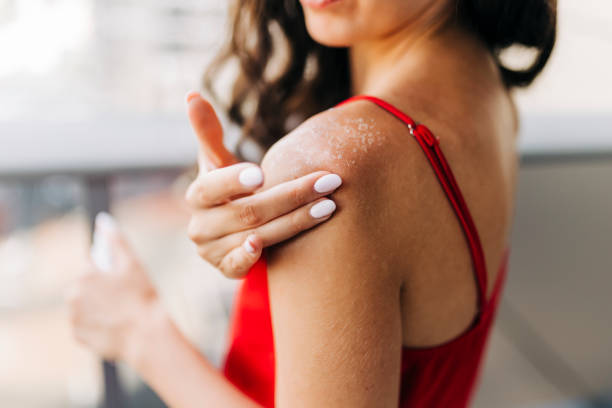
There can be various reasons for the presence of red spots on the skin, which makes it difficult to determine the exact cause. The skin may become inflamed due to number of different causes, such as a short-term or prolonged infection. It is advisable to see a physician, preferably a dermatologist, who can make a proper diagnosis as to the underlying cause of the red spots on your skin. In the meantime, some of the most common causes and treatments associated with red spots on the skin are explained below.
- What are Red Spots on the Skin?
- What Causes Red Spots on the Skin?
- How do you Get Rid of Red Spots on the Skin?
- When to See a Doctor?
- Frequently Asked Questions
What Exactly are Red Spots on the Skin?
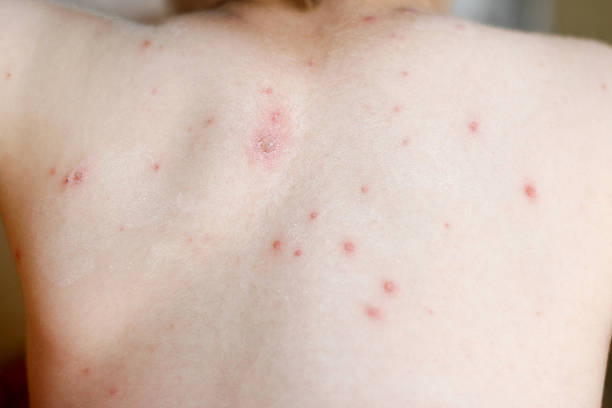

The appearance of red spots on the skin can be quite tricky to interpret. They come in many forms, areas and changes and are caused by things like acne, hyperpigmentation and even plain rashes. These wretched things could take the form of small pear like protrusions dotting the skin, smooth surfaces or even tiny rusty or red spots on the skin arranged neatly along.
To put it even simpler, red spots on the skin can be termed as rashes which can be caused by many factors, infections and allergies being some of them and heat as the other. One has to admit, though red spots on the skin might not be dermatologically dangerous, they are quite annoying, a yellowish pair of socks that found its way to the basement. And let’s admit it, such things tend to cause some dissatisfactory situations for the people interacting with them.
Acne is yet another variant of red dots on skin but that skin in question would be the one of a face and the reasons behind it, simply put, poor hygiene practices. Even acne prone individuals who maintain good hygiene, sometimes suffer skin outbreaks due to excessive production of sebaceous substances that block hair shafts or because they don’t have skin care regimes. Unfortunately, some skin problems, including redness or sores, can be detrimental to self-confidence. Take for instance clinical acne or even sunburns, these contributing causes may also lead to the formation of darker patches elsewhere termed as hyperpigmentation. The degree of pigmentation does not match that of the normal skin and is visually striking, and any injuries sustained may heal to a scab after long exposure to the sun. These tendencies in skin can be disheartening making it difficult to come to terms with one’s own body.
What Causes Red Spots on the Skin?
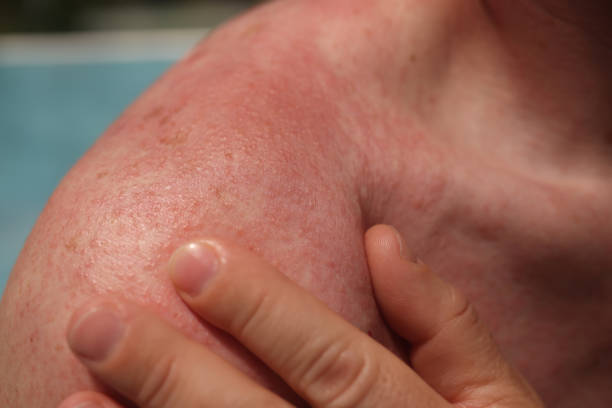

There are ais a multitude of explanations for the emergence of red spots on the skin. On the one hand, some of them are quite pleasant. On the other hand, some of them might make you scratch your head (or your skin, in this case).
1. Practice medicine allergically: It can be a new washing powder or a daringly new fragrance you put on and tried out. Most commonly the effect describes red itchy surfaces on the skin which means that there is an active allergy. An inflammation is inevitable when the immune defence witness something new.
2. Variations in hormone levels: There are many contributing factors when it comes to lower levels of acne. Factors such as these hormones cause great changes in the body, such as puberty, pregnancy, or even one’s menstrual cycle, causing the oil glands to be hyperactive. This hyperactivity contributes to the growing clogged pores and later leads to acne.
3. Sun exposure: Those red spots on the skin could either be skin irritation associated with excessive sun exposure or might be a warning of skin damage. Ultraviolet radiation exposure for a long time does lead to sunburns, rashes and it even causes skin darkening which is also known as hyperpigmentation.
4. Diseases of the skin: Conditions may present as bumps or flat red patches on the skin as seen in eczema, psoriasis, or rosacea, among others. These in most cases are accompanied by irritation, inflammation, or flaky skin and are layout conditions that may need attention for a long time.
5. Is there more?: These, however, are not the only causes. In some cases, red spots on the skin could also occur due to microorganisms. Affected areas can be caused by a range of conditions which include but are not limited to, folliculitis, pigeon infectious diseases, or even ringworm infections.
How Do You Get Rid of Red Spots on the Skin?
Now that we have been acquainted with the criminals behind these spots, let’s discuss how to control, treat, and avoid these spots from appearing (or at least pomp their grand appearances). Whether your skin is prone to acne or is bothered by pigmentation, there are products and treatments that can help tremendously.
According to WebMD, in the case of acne skin, special care has to be taken and cannot do without products like non-comedogenic moisturizers, treatments with salicylic acid, and toners with vitamin C to cut down the swelling and dark spots. They further advise against the use of thick creams that would otherwise block the pores.
Face Cream for Red Spots on the Skin
Always believe in starting with the basics. A good face cream is like the foundation to a house. You need a strong base to build on and one solution could well be to opt for creams specifically designed for acne-prone skin. They have to contain ingredients like salicylic acid, tea tree oil, or niacinamide which are all basically known for their anti-inflammatory and acne-fighting properties.
One personal suggestion is a face cream from Blue Nectar that is not only hydrating but also targets skin pigmentation and reduces redness. These creams help calm irritated skin, and trust me, your face will thank you for it.
Face Serums for Red Spots on the Skin
Serums are similar to those overambitious mates who just seem to excel at everything. Face serums, which is lighter than creams but still contain active components such as vitamin C and hyaluronic acid. They enhance the skin, lighten the skin’s dark patches, and also help in lowering the melanin color of the skin.
A couple of tubes of hydrating serum, considering being easy on your pocket as well as free from chemicals, can definitely help in nipping those stubborn red marks in the bud. I.e. whether it is acne-induced pigmentation or pigmentation due to sun damage—serums are rightly a non-negotiable in any skincare regime.
Body Oil for Red Spots on the Skin
Body oils might seem like an indulgent luxury, but they can be an essential part of dealing with red spots on the skin, especially when hyperpigmentation or dry skin is involved. Oils such as almond oil, coconut oil, or some of our handpicked best nourishing blends are fantastic for keeping your skin moisturized and helping to fade dark spots over time. Body oils can also prevent rashes caused by dryness, ensuring your skin stays soft, smooth, and free from irritation.
Body Lotion for Red Spots on the Skin
Finally, never underestimate the power of a good body lotion. Using a moisturizer on a daily basis helps in minimizing the appearance of red spots on the skin by promoting and maintaining the integrity of the skin barrier. Application of fragrance-free body lotions enriched with moisturizing agents like shea butter, aloe vera, glycerin, etc. is recommended. This is particularly beneficial for the patients who are prone to develop acne, since a good moisturizer forms a protective barrier against dehydration, which in turn prevents further formation of red spots on the skin.
In addition, The American Academy of Dermatology has also raised public awareness regarding the importance of protection against sunlight due to its ultraviolet (UV) rays that cause skin hyperpigmentation and skin redness as well. Consequently, the use of sunblock and other measures is essential in preventing those problems.
When to See a Doctor?
However, regarding most of the red spots on the skin, home management is quite effective, but there are times when it would be important to go for medical advice. If your red spots are associated with extreme itching, puffiness, or pus, or if they come up suddenly and spread rapidly, then it is a sign that you should visit a doctor. Skin infections and allergic conditions such as eczema or psoriasis may require prescription only medication or advanced management systems.
Frequently Asked Questions
1. Is it possible for red spots on the skin to resolve without any treatment?
Yes, quite a number of them. Red spots on the skin caused by, for instance, erythema or small rashes, can resolve on their own with appropriate management. However, more troublesome conditions like dark spots would call for some medicated facial creams or serums. Try to work it out with household remedies as they have little to no side effects but if the conditions worsen, consult a dermat ASAP!
2. What is the healing duration for red spots on the skin?
It varies with the etiology. A pimple will take several days to heal while post-inflammatory hyperpigmentation will take weeks or even months to resolve. This has the positive effect of enabling the user to heal faster with the use of face serums for red spots.
3. How essential is moisturizing for people with acne-prone skin?
Of course, it is! Moisturizing is crucial to maintaining a healthy skin with an acne issue. Moisturizers for acne-prone skin should bear the label “non-comedogenic”, which means it won’t block any of your pores. Lightweight oil-free moisturizers hydrate the skin without leaving it feeling oily.
4. Can body lotion be used on the face to treat red spots and likes?
It’s best not to. Body lotions, you would notice, have thicker formulations and ingredients that are seldom suitable for facial skin and yes, you have different types of skin. Stick to face creams or serums for red spots that are designed specifically for delicate facial skin.
5. Are there any home remedies for red spots?
For instance, home remedies such as aloe vera gel or honey can help in calming down the red spots that have been caused due to irritation. Red spots due to factors such as acne or hyperpigmentation would be better off treated by scientific methods. It is true that natural remedies may seem the most appealing option especially when it comes to such skin issues. The most recommended solution is to follow a consistent skin care routine to eliminate the red spots on your acne-prone skin.
Some Last Thoughts…
In short, it is normal to encounter red patches on the skin from time to time but that does not mean they have to last permanently. Like in the case of skin being affected by acne and pigmentation or even just brought with irritation, there is always a way to treat skin so that it can recover and glow in all its healthy glory once again. Be it face creams, serums, body oils or lotions, the effectiveness of the right skincare routine cannot be exaggerated. Just keep in mind that there is no magic product which will give results in the morning after cleaning the skin at night, however, with a little help from cosmetics, usually those that are free from artificial cruelty, and love and care, you will have a brighter skin within a short period of time. Who am I kidding anyway, there’s always makeup. Hey, even superheroes have to wear masks sometimes.
Now now, the fun part is almost over. Acne moisturizers are essential for acne-prone skin, no matter what anyone says. The thought that not applying a moisturizer would be good for one’s oily skin can not be proven correct. The trick is to know which one to use. And speaking of products for skin pigmentation, those serums are indeed the workers of the routine. But good skincare is not about applying a million products on the skin and it will do the work, rather it is more about the application, the right application at the right time of what works best for your skin. Also, drink water. I know, I know, so basic; but yes, it works!
So, if those red blemishes are bothering you, relax and take a breath. This happens to all of us at one time or another. But with the right measures and some care for your skin, you will be free from the pesky red spots on the skin in no time. So, remain calm, hydrate and moisturize, and perhaps try to buy some new cosmetic items.
Thus, red spots on the skin can take various images – a rash, hyperpigmented spot, or some of the most irritating inflamed acne. Where these little irritants tend to hang out are places that are quite the opposite of desired. The good thing about them though, is that they do not, until extremely aggravated, require a medical consultation. While red spots can be cured by oneself, one should be vary of the fact that they can, indeed, aggravate. But let us not fret. A healthy body is a healthy mind (pretty sure it is the other way round but for the sake of your skin, let us keep it at that) and it needs a comprehensive skin care routine including moisturisation and red spot prevention for the same.
Alright, that’s it from me. Your skin’s next chapter is ready to begin! There is always some help from our end!



